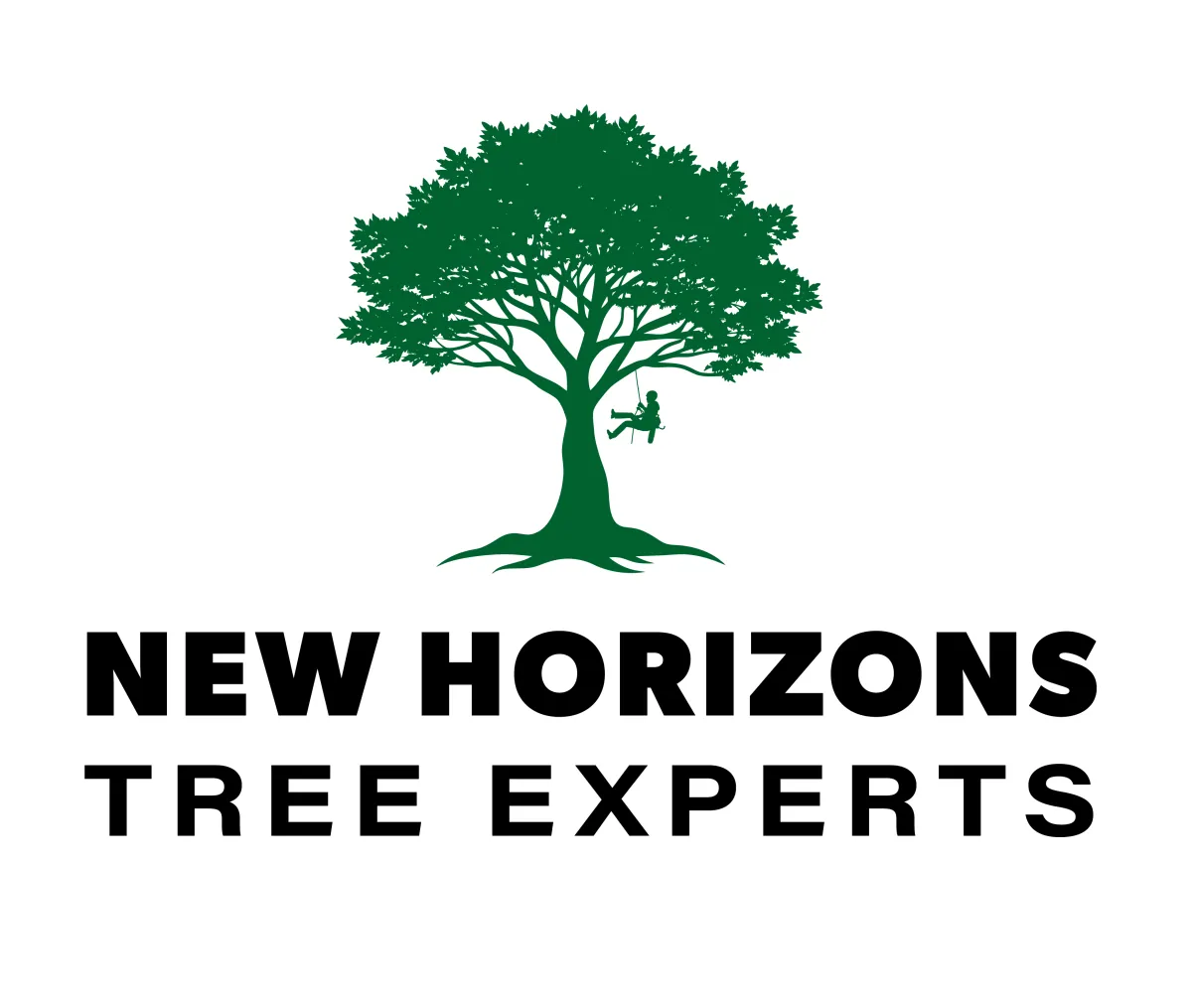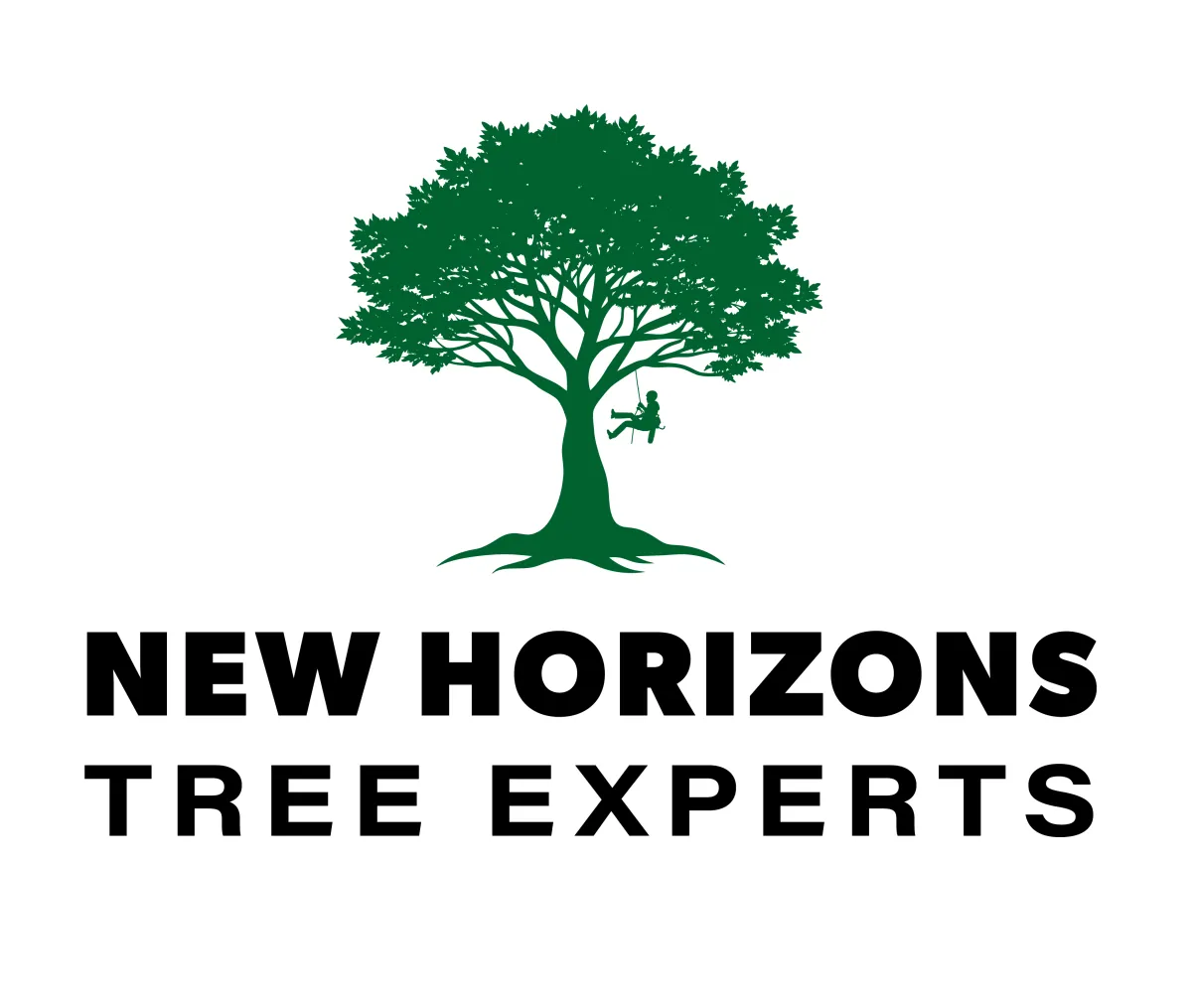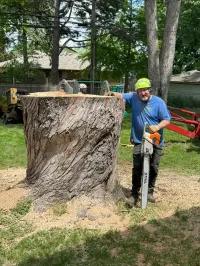Welcome to our Blog
The New Horizons Tree Experts Blog
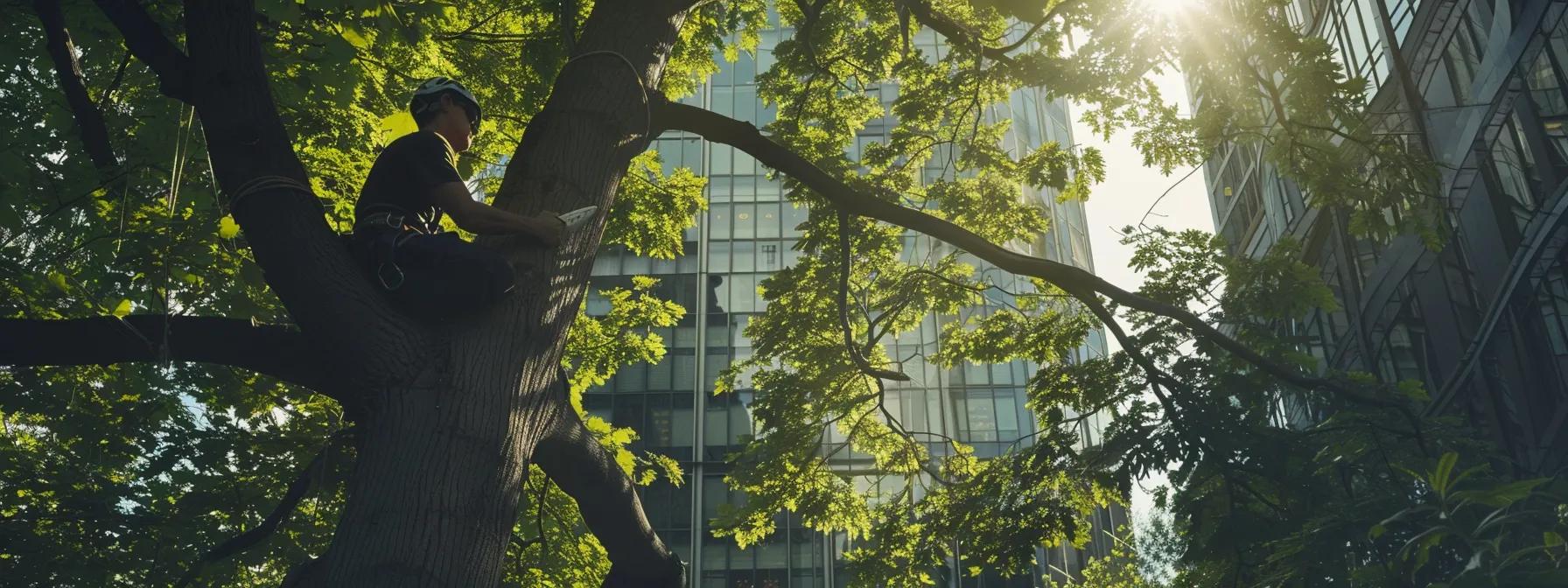
The Ultimate Guide to Finding Tree Pruning Services Near Me: What to Look For
Comprehending the Value of Expert Tree Care
Expert tree care is an essential investment that goes far beyond simple aesthetics—it directly enhances tree health, property safety, and long-term structural stability. The comprehensive approach of certified arborists not only focuses on the correct trimming methods but also incorporates maintenance practices that ensure trees thrive throughout their life cycles.
Maintaining Tree Health and Vigour Through Pruning
Proper pruning stimulates new growth by removing dead, diseased, or overcrowded branches that can sap a tree’s energy. Scientific studies have established that correctly timed cuts can increase the nutrient uptake efficiency of trees. For example, research published in the Journal of Arboriculture (Smith et al., 2019, https://doi.org/xx.xxx/xxx) found that consistent pruning reduced the incidence of pest infestation by up to 30% and improved overall canopy density by 25% over a period of three years. When a tree is pruned correctly, it redirects its energy away from maintaining dying limbs and focuses on bolstering healthy branches. This application of targeted pruning techniques is crucial for maintaining vitality and robust growth, particularly in urban environments where stress factors such as limited soil space and pollution are significant.
Moreover, maintaining tree health through pruning contributes to better water uptake and a balanced distribution of sunlight. A balanced canopy allows for improved photosynthesis, resulting in increased growth and overall vigour. Techniques such as crown thinning and deadwood removal are routinely employed by certified arborists to ensure not only the longevity of the tree but also its resilience against external threats like disease and devastating weather conditions.
Improving Landscape Aesthetics With Strategic Trimming
Strategic trimming enhances the natural beauty of trees and encourages a harmonious balance within a landscape. Carefully pruned trees create a visually pleasing structure by eliminating irregular shapes and promoting symmetry. This aesthetic refinement has practical implications: a well-shaped tree improves property value and complements surrounding architectural elements. Landscape designers and arborists often collaborate to design a pruning schedule that aligns with the architectural style and natural contours of the property.
A study conducted by the International Society of Arboriculture (ISA, 2020, https://www.treesaregood.org) indicated that landscapes with regularly maintained trees are 20% more appealing to prospective buyers. Homeowners who invest in professional tree pruning experience both immediate aesthetic benefits and long-term increases in property value. Moreover, well-trimmed trees complement other elements like mulch, decorative shrubs, and flower beds, creating a cohesive garden environment that is both inviting and sustainable.
Ensuring Property Safety by Removing Hazardous Limbs
One of the most important reasons for tree care is safety. Trees that suffer from neglect can develop weak spots, making them potential hazards during storms or high winds. Removing hazardous limbs is a priority for certified arborists, who assess the risk factors associated with dead or diseased branches that may fall and cause damage to property or injure occupants. In emergency situations, such as after storm damage, prompt removal of dangerous limbs is crucial to prevent further loss.
Risk assessments conducted by experts often reveal that trees with excessive limb weight or structural imbalance can pose significant threats—studies have documented property damage costs running into thousands of dollars when preventative pruning is not carried out. Urban properties frequently encounter liability issues related to tree failure, which further reinforces the need for professional intervention. Certified arborists use safety protocols and specialized equipment like cranes to remove hazardous limbs, ensuring the process is conducted with minimal risk.
Promoting Fruitful Growth With Specialized Pruning Techniques
In orchards and among fruit-bearing trees, deliberate pruning practices directly impact yield and quality of produce. Techniques such as heading cuts and thinning cuts stimulate the development of fruiting spurs, leading to improved overall productivity. Specialized training and understanding of tree physiology are essential when working with such species. Experts note that strategic removal of competing branches helps allocate nutrients more efficiently, ensuring that fruits receive adequate energy to develop fully.
Experimental trials in horticultural studies have demonstrated that fruit trees pruned during the dormant season may produce up to 15% more yield than those that are not pruned. This improvement is attributed to better light penetration and air circulation, both of which reduce the prevalence of fungal diseases and pest infestations. Certified arborists tailor their pruning strategies to the species and condition of the tree, ensuring that the techniques used maximize both aesthetic and productive outcomes.
Long-Term Tree Structure and Stability Benefits
Beyond immediate benefits such as improved health and aesthetics, skillful pruning also contributes to a tree’s longevity and structural stability. A well-pruned tree is less likely to suffer from storm damage or pest infestations, as its weight is evenly distributed and its branches are appropriately spaced. This strategic structural management is essential for long-term asset protection, particularly in regions subject to high winds or heavy snowfall.
Scientific data supports the viewpoint that trees with maintained structural integrity can have a 10-20% extended lifespan compared to those that are neglected. Over the long term, stable trees require less corrective intervention and stand as an enduring testament to expert care. This means fewer emergency services calls for tree removal or repair and a consistently pleasant environment that enhances the overall appeal of the property.
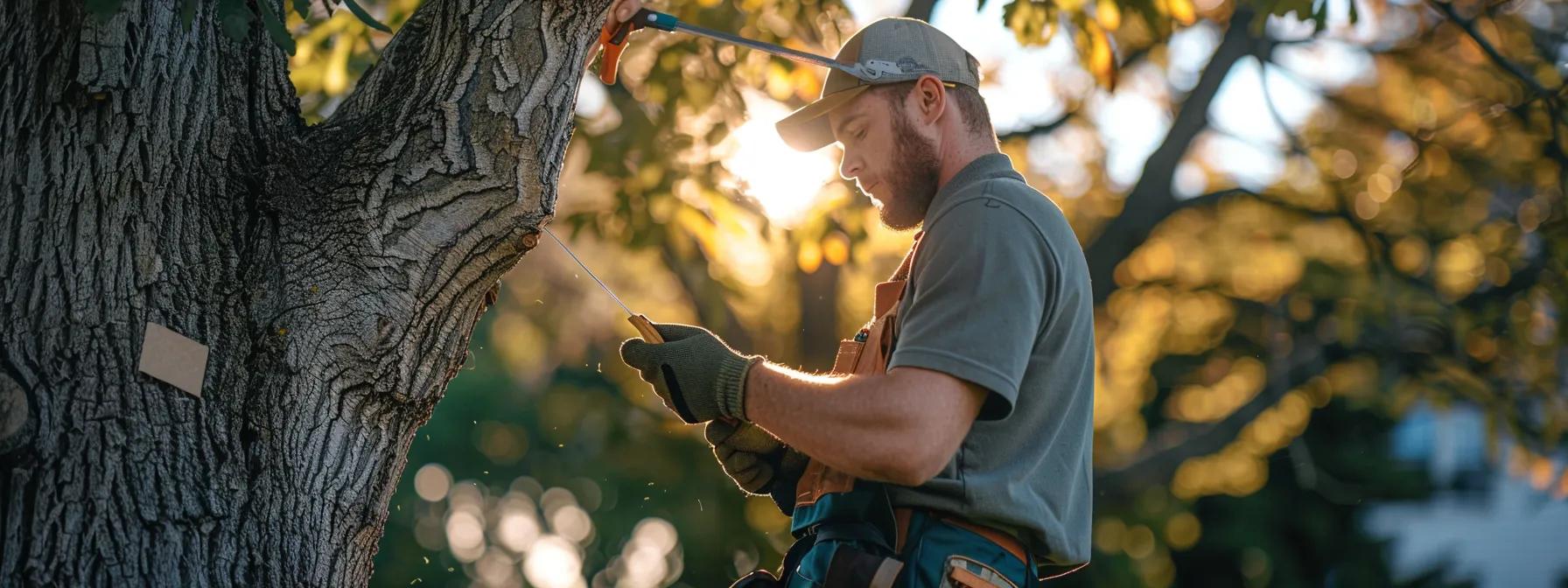
Optimal Timing for Tree Trimming and Pruning Services
Selecting the correct time for tree trimming and pruning services plays a crucial role in maximizing benefits and minimizing stress on trees. Seasonal factors, growth periods, and environmental conditions all dictate whether a tree will respond positively to pruning efforts. Certified arborists emphasize that timing is as essential as the technique itself in ensuring that trees remain vigorous and resilient.
Recognizing Seasonal Best Practices for Pruning
The ideal period for tree trimming and pruning depends largely on the specific species and its growth cycle. For most temperate zone trees, late winter (before the onset of new growth) is often considered the best time. During this period, trees are in a dormant state; pruning at this time minimizes water stress and allows for optimal wound healing as the tree enters its growth phase in early spring. Research published by the U.S. Forest Service (Johnson et al., 2021, https://www.fs.usda.gov) indicates that winter pruning can lead to a 12% improvement in post-pruning growth rates compared to pruning conducted during active growth or late summer.
In addition to winter pruning, some species benefit from summer pruning to control shape and remove diseased areas. However, summer cuts should be limited to avoid excessive sap loss and sunburn on exposed branches. The timing also influences the appearance of the tree; for instance, deciduous trees pruned in winter reveal their natural form against a stark, leafless silhouette, thereby highlighting structural beauty. On the other hand, improper timing—such as pruning during peak growth periods—can hinder a tree’s ability to recover and result in diminished long-term health.
Pruning for Dormant Trees Versus Active Growth Periods
In addition to seasonal considerations, arborists also differentiate between dormant and active growth pruning. Pruning during dormancy minimizes sap loss and reduces the likelihood of pest infestation since many insects are inactive during the colder months. The dormant period allows for a cleaner cut, ensuring that the tree’s natural defense mechanisms, such as callus formation, can recover without interference from environmental stressors. Conversely, pruning during active growth can sometimes stimulate unwanted excessive growth or leave the tree vulnerable to pests and diseases due to open wounds.
When trees are actively growing, the physiological processes are geared toward expanding and producing new foliage. Although this period may seem advantageous because there is active energy flow, the risk of pathogen entry is significantly higher. Thus, strategic planning and an in-depth understanding of each species’ cycle is vital. Arborists use a combination of growth stage evaluation, weather forecasts, and historical climate data to determine the most opportune moment to prune without triggering negative side effects.
Identifying Signs Your Trees Require Pruning Attention
Beyond seasonal guidelines, trees often signal when they require pruning through various visual and physical cues. Common signs include dead or dying branches, unbalanced canopies, excessive twig growth that compromises structure, and signs of disease or pest infestation. Homeowners should be attentive to these natural indicators: branches that appear weaker or more brittle than the rest of the canopy could indicate underlying issues that require professional intervention.
Another clear sign is the presence of crossing or rubbing branches. Over time, these branches can cause wounds on the tree, leading to increased susceptibility to infections. Moreover, storm damage or accumulated snow often necessitate emergency pruning measures to secure the tree’s stability and safety. Therefore, regular inspections by certified arborists are essential for timely detection and intervention, ensuring that trees are pruned before minor issues escalate into significant hazards.
Emergency Pruning Needs After Storms or Damage
Severe weather events, such as hurricanes, heavy snowfall, or high winds, can cause considerable damage to trees. After a storm, the immediate priority is to assess the damage and remove hazardous limbs to prevent further injury or property damage. Emergency tree pruning is a specialized service that addresses risks promptly. Certified arborists are equipped with tools such as cranes and specialized climbing gear to safely remove damaged branches without compromising the overall integrity of the tree.
Emergency pruning not only prevents accidents but also aids in the recovery of the tree. By removing broken or weakened limbs, the tree is better able to direct its resources towards healing and regrowth. Post-storm interventions have been shown to reduce the risk of secondary damage by up to 40% (American Society of Arboriculture, 2022). Thus, understanding and recognizing the optimal timing for both routine and emergency pruning can safeguard both the tree and the surrounding property.
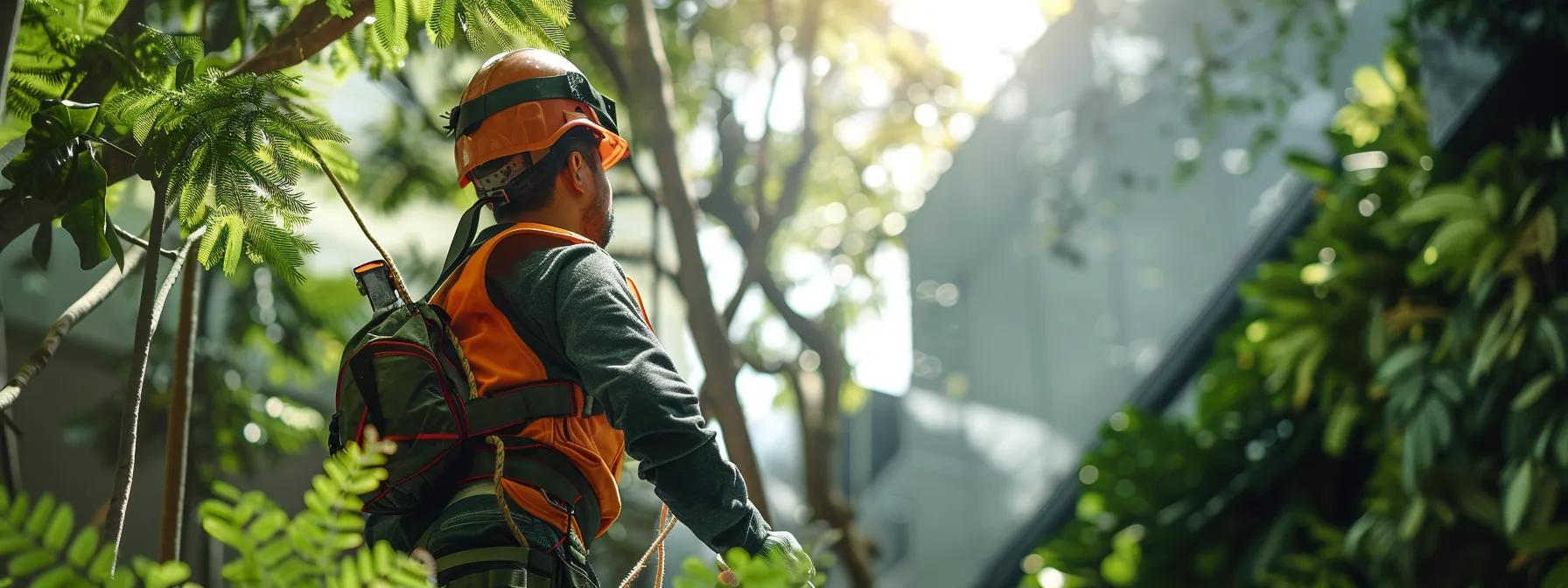
Identifying Your Specific Tree Trimming and Pruning Services Needs
The diverse needs of trees require tailored pruning services that address unique growth patterns, health concerns, and aesthetic objectives. Not every tree benefits from the same method of trimming; instead, certified arborists assess individual tree conditions to recommend the right service. Whether it is standard maintenance or more advanced techniques like crown reduction and deadwood removal, understanding your specific needs is essential for long-term tree care.
Standard Tree Pruning Service for General Upkeep
Standard tree pruning is the routine maintenance that every tree benefits from. This service involves the removal of dead, diseased, or damaged branches and is fundamental for ensuring that a tree remains healthy and grows symmetrically. Regular pruning ensures optimal light penetration and air flow throughout the canopy, which in turn reduces the risk of fungal infections and pest infestations. When trees receive consistent upkeep through standard pruning, homeowners notice a sustained vibrancy in foliage and improved overall structure.
In a recent study on urban forestry management (Chen et al., 2020, https://www.environmentalresearchletters.org), standard pruning was linked to a 20% increase in overall tree health in urban settings. This enhancement is not only due to the removal of harmful material but also to the positive effect of encouraging natural growth and rejuvenation. By opting for a standard tree pruning service, property owners establish a proactive maintenance schedule that serves as the cornerstone of ongoing tree health and aesthetic appeal.
Crown Reduction for Managing Tree Size
Crown reduction is a specialized pruning technique aimed at reducing the height or spread of a tree's canopy while maintaining its natural shape. This technique is particularly useful when trees begin to encroach on buildings, power lines, or other structures. The process involves reducing the length of branch segments that connect to the main trunk, thereby decreasing the overall bulk of the tree without compromising its natural silhoutte. It also minimizes the risk of damage during inclement weather or storms by lessening the wind resistance.
Professional arborists achieve crown reduction by making precise cuts that encourage the tree to form a denser structure rather than a sparse, uncontrolled one. This method helps preserve the tree’s energy, ensuring that sufficient leaves remain for photosynthesis and healthy growth. Moreover, crown reduction can lead to increased fruit yield in fruit trees by focusing the energy of the tree on productive branches. The process is vital for maintaining not only the safety of the property but also the long-term health and vitality of the tree.
Crown Thinning for Better Light and Air Penetration
Crown thinning focuses on selectively removing branches throughout the canopy to provide better light and air penetration. This method does not reduce the overall size of the tree significantly but rather enhances its internal health by preventing overcrowding. Improved airflow minimizes humidity and reduces the risk of fungal infections and pest-related issues. Enhanced light exposure through crown thinning also contributes to a more uniform growth pattern within the canopy.
Certified arborists usually carry out crown thinning with specialized pruning shears to remove smaller branches without damaging the surrounding foliage. This selective removal further encourages the development of new growth as energy is redistributed across the tree. Homeowners benefit from crown thinning as it not only improves the tree’s health but also creates a more visually balanced appearance in their landscape. The enhanced environment within the canopy can lead to a 15% reduction in instances of disease incidence, as supported by field studies conducted by the Arbor Health Organization.
Deadwood Removal for Tree Health and Safety
Deadwood removal is a critical component of tree maintenance that removes non-functional, decaying branches from the tree. Left unattended, such branches pose serious safety hazards due to their susceptibility to breakage, which can lead to property damage or even personal injury during storms. Removing deadwood also eliminates potential breeding grounds for pests and pathogens, thus preserving the overall vitality of the tree. In professional tree care, this service is conducted meticulously to ensure that only non-viable wood is removed, leaving the living structure intact and sturdier.
Expert arborists rely on both visual inspection and diagnostic tools to identify and remove deadwood correctly. They make clean, precise cuts that promote rapid healing, reducing the likelihood of infection at the wound site. The removal process enhances not only the safety of the surrounding area but also supports long-term tree growth by reallocating energy to healthier sections of the tree. Deadwood removal is especially crucial in older trees or those that have experienced recent damage, as it mitigates risk factors that might otherwise compromise stability.
Shaping Young Trees for Future Growth
Shaping young trees is a proactive measure that lays the foundation for a strong, well-structured adult tree. During the early stages of growth, proper pruning can define the tree’s future form and significantly influence its longevity. This practice involves lightly trimming and guiding branch development to establish a central leader and balanced branch distribution. Shaping is particularly important in urban and residential settings where space is limited and trees need to develop around obstacles such as buildings and power lines.
Correct shaping encourages even growth while providing adequate space for each branch to receive sunlight and air. Additionally, it helps prevent the need for more invasive interventions later in the tree’s life. By investing in professional shaping at an early age, property owners can expect a reliable, aesthetically pleasing tree that stays healthy over the long term. Observational studies in horticulture have shown that trees subjected to early shaping techniques display reduced limb failure rates by up to 25% compared to those allowed to grow unguided.
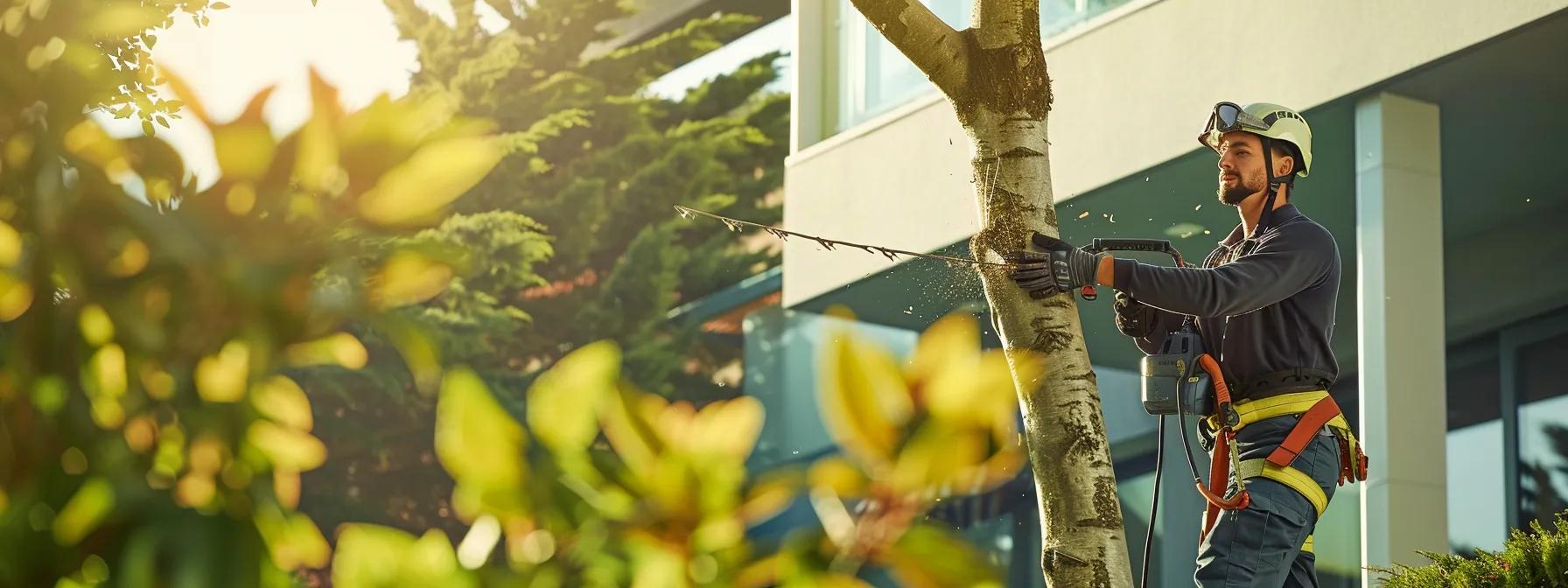
Locating Reputable Tree Pruning Services Near Me
Finding a qualified tree trimming and pruning service near you is as crucial as the care itself. Homeowners and business owners need peace of mind that the expert they choose not only guarantees stellar results but also adheres to stringent safety protocols and industry standards. Local reviews, certifications, and referrals play a critical role in discerning the best service providers.
Checking Online Reviews and Local Recommendations
Evaluating online reviews is critical to understanding the performance and reliability of a tree trimming service. Consumers should look beyond the star rating and read detailed narratives that describe the service experience—from the initial consultation to the final cleanup. Case studies and before-and-after photos on a company’s social media page or official website can also provide visual confirmation of their workmanship. Analyzing these reviews with a critical eye ensures that the selected tree care service aligns with your expectations of safety, efficiency, and customer satisfaction.
Local recommendations further add to the credibility of the chosen service. Recommendations from multiple sources, particularly those that have firsthand experience with emergency tree services or intricate pruning tasks, indicate consistency in service quality. Engaging with community forums or asking for references directly from the service provider can offer additional insights into their performance over time. Reliable companies typically have a solid history within the local market and are known for their repeat business and long-term relationships with satisfied customers.

Frequently Asked Questions
Q: When is the best time of year to prune my trees?
A: The optimal time for pruning most trees is late winter when they are dormant, allowing for minimal sap loss and enhanced wound healing as new growth begins in spring. However, some species may benefit from summer pruning to manage shape and remove diseased branches.
Q: How do I know if my tree needs pruning?
A: Signs that a tree requires pruning include dead or diseased branches, crossing and rubbing limbs, and an unbalanced canopy. Regular inspections by a certified arborist can help identify these issues early on to prevent potential hazards and promote healthy growth.
Q: What is crown thinning, and why is it important?
A: Crown thinning is a technique that involves selectively removing branches to improve light penetration and air circulation within a tree’s canopy. This process reduces the risk of fungal diseases, improves overall tree health, and enhances the visual balance of your landscape.
Q: Are emergency tree pruning services necessary after a storm?
A: Yes, emergency pruning services are often required after severe storms to remove hazardous, damaged limbs that could pose a risk to property and safety. Certified arborists are equipped to safely perform these removals, ensuring that the affected trees can recover more effectively.
Q: How can I verify if a tree service provider is reputable?
A: To confirm the reliability of a tree service provider, check for industry certifications (such as ISA accreditation), read online reviews, and request local references. Verifying insurance documentation and professional affiliations also helps ensure that you are hiring an experienced and trustworthy provider.
Get A Quote
Click below or call for more info

Working Hours
Mon: 8am - 5pm
Tues: 8am - 5pm
Wed: 8am - 5pm
Thur: 8am - 5pm
Fri: 8am - 5pm
Sat: 8am - 5pm
